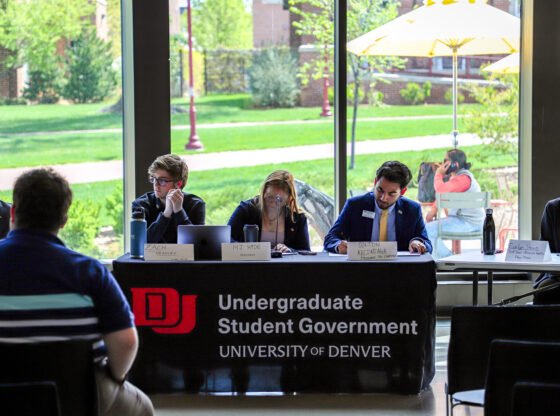Blood drives are vital to the operation of hospitals and surgical procedures that constantly save lives. According to the American Red Cross, someone in the United States needs blood every two seconds. These blood drives occur four to five times a year on the DU campus, with the most recent one starting off the quarter on Tuesday and Wednesday, Sept. 18 and 19 in the Anderson Academic Commons. Mass collection of blood and distribution to local and national medical centers is complex and multifaceted, but Bonfils, which has recently rebranded to Vitalant, one of Colorado’s largest nonprofit healthcare organizations, makes it simple.
An interested blood donor does not need to go far to find a blood drive or donation center that is easily accessible. In addition to their three fixed donation sites, located within 10 miles of DU, Bonfils hosts blood drives year-round at schools, universities, community centers, churches and businesses. Community Donor Representative Sarah Miller recommended that those looking to host their own blood drive should initially explore the possible donation sites near them and consider taking a group there first.
Miller said, “If you called me to say ‘I want to host a blood drive at DU,’ first I would ask you to help me support the other blood drives we are already doing on campus.” Those passionate about hosting their own local blood drive need to complete an Interest Form online and determine an expected participation rate for their drive. Bonfils will then send a representative over to the potential drive location to scout out a room suitable to hold their equipment. Once the details are finalized, Bonfils provides all materials and volunteers needed for the drive with no fees and free snacks for donors—all the community needs to do is provide the blood.
The entire process of donating blood takes approximately an hour, depending on the number of Bonfils staff and the number of donors in the room. It is a straightforward process that is broken down into a flow chart on Bonfils’ website for those interested. Before giving blood, a donor must complete a questionnaire that reviews their recent medical history to determine their donation eligibility. A full breakdown of donor eligibility can be found here. The basic and most important guidelines are that a person should not donate blood if they have recently been out of the country, engaged in unprotected sex or have felt ill. This is to ensure that all blood donated is safe for others to take in. As Miller said, “It’s definitely a precious resource, so we don’t waste it.”
After the medical history review is complete, donors are taken over to a chair where a nurse will sanitize their arm, locate a vein and begin drawing blood. Once a full pint of blood is drawn, the donor is bandaged up and instructed to eat a snack to avoid feeling faint. For those who want to donate blood but are afraid of needles or pass out easily, Bonfils offers other methods of volunteering, including assisting directly with one of their centers or spreading the word around to friends about when they can donate blood. Additionally, people who are not eligible to donate blood to the community blood supply can still donate to the Blood Systems Research Institute, which conducts studies that explore ways blood can be used more efficiently.
An individual may donate blood every 56 days. Healthy bodies constantly replenish their blood supply, bodies undergoing surgical operations constantly need more healthy blood and communities consistently hold blood drives that are accessible to anyone. Miller said that Bonfils will be back at DU in November and all students need to do is stop by with a photo ID and a hydrated body and they will be good to donate.











